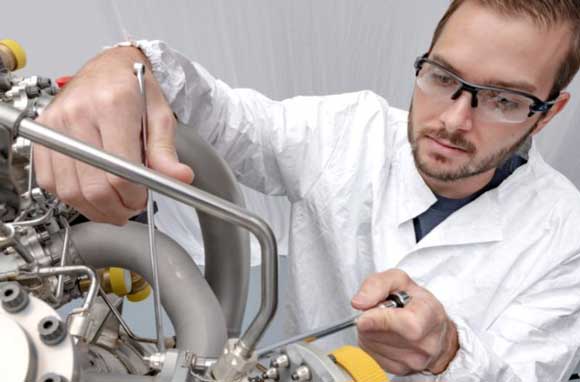Aerojet Rocketdyne, an aerospace and defense company, recently completed a successful RL10C-X altitude hot fire test series that put the next generation engine through the rigors of a typical spaceflight mission. Using a test chamber that simulates the vacuum of outer space, the RL10C-X, which produces roughly 24,000 pounds of thrust, was tested in a flight-like configuration to demonstrate the engine’s capability to complete a typical mission profile, including multiple restarts.
The RL10C-X is the next evolution of the company’s RL10 upper-stage engine and contains major components – including the injector and combustion chamber – produced with the company’s industry-leading 3D printing technology.
“Successfully completing this test series validates our approach to incorporating 3D-printing technology into the RL10 program in order to reduce cost while maintaining the engine’s unmatched performance,” said Aerojet Rocketdyne CEO and President Eileen P. Drake. “The RL10 has been a workhorse in the industry for nearly six decades and the RL10C-X will help ensure the engine maintains this leadership position well into the future.”
During the recent test series the engine successfully demonstrated both long-duration operation and engine ignition at extreme in-flight conditions. The RL10C-X development program has accumulated more the 5,000 seconds of full engine hot fire time and 32 starts to date.
The Aerojet Rocketdyne team has followed a deliberate and proven development path that began with 3D printing and testing subscale components, then progressing to full-scale thrust chamber testing in 2017. The team went on to incorporate and successfully test a new re-generatively cooled nozzle that was 3D printed from a nickel-based alloy, which led to testing a full scale engine system at sea-level in 2019.
“The outstanding progress we’ve made on this program demonstrates the maturity of the entire RL10C-X engine system for operational use,” said Aerojet Rocketdyne Space Business Unit Senior Vice President Jim Maser. “This test series, the first for this full configuration, completed more than 600 seconds of run time in only two test runs. This accomplishment not only demonstrates the capability and robustness of the RL10 design, but also the tremendous depth of experience this team has with hydrogen engine development and evolution.”
The RL10 engine has undergone nine major upgrades. In addition to orbiting hundreds of satellites and sending spacecraft to explore every planet in our solar system, the engine powered the DC-X vertical takeoff and landing vehicle in the 1990s and has demonstrated a deep-throttling capability for NASA down to 10 percent of rated thrust, making it ideal for large lunar lander and future Mars lander applications.
Aerojet Rocketdyne is developing the RL10C-X in conjunction with the U.S. Air Force and United Launch Alliance, which plans to use the engine to power the Centaur upper stage of its Vulcan Centaur launch vehicle.
Remember, you can post job opportunities in the AM Industry on 3D ADEPT Media free of charge or look for a job via our job board. Make sure to follow us on our social networks and subscribe to our weekly newsletter : Facebook, Twitter, LinkedIn & Instagram ! If you want to be featured in the next issue of our digital magazine or if you hear a story that needs to be heard, make sure to send it to contact@3dadept.com






